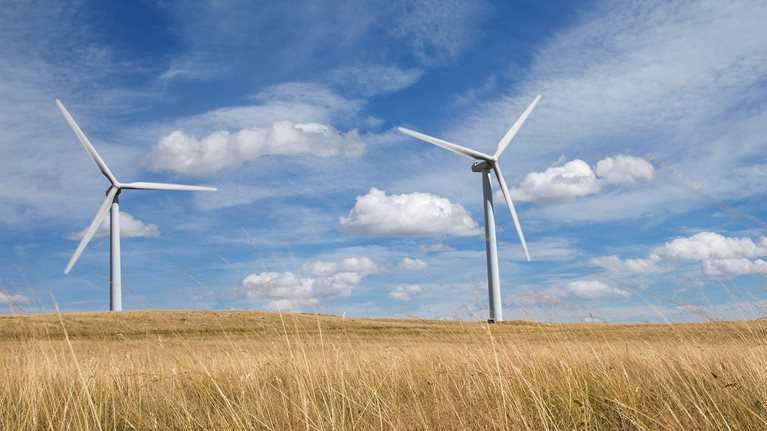The industrial sector is a vital source of wealth, prosperity, and social value on a global scale. Industrial companies produce about one-quarter of global GDP and employment, and they make products and materials that are integral to our daily lives. Their activities, like those of most businesses, also take a toll on the environment. Roughly 28 percent of global greenhouse-gas (GHG) emissions came from industry in 2014. Unless industry can lower its emissions, the world will struggle to reach the GHG reduction targets of 80 to 95 percent that governments set under the Paris Agreement of 2015.
Stay current on your favorite topics
Lowering industrial GHG emissions won’t be easy, but it is possible. A new report from McKinsey, Decarbonization of industrial sectors: The next frontier (PDF–21MB), finds that ammonia, cement, ethylene, and steel companies can reduce their carbon-dioxide (CO2) emissions to almost zero with energy-efficiency improvements, the electric production of heat, the use of hydrogen and biomass as feedstock or fuel, and carbon capture. The decarbonization of these sectors will cost between $11 trillion and $21 trillion through 2050 and will require accelerating the build-out of renewable-energy capacity, to provide four to nine times as much clean power as industry would need in the absence of any effort to reduce emissions.
The challenges to reducing industrial CO2 emissions
The vast majority of industry’s GHG emissions, 90 percent, consists of CO2. Half of industry’s CO2 emissions result from the manufacture of the four industrial commodities—ammonia, cement, ethylene, and steel—that are the focus of our report.
Would you like to learn more about our Sustainability & Resource Productivity Practice?
Abating CO2 emissions in the focus sectors is more difficult than it is in most others for four technical reasons (Exhibit 1). First, the 45 percent of CO2 emissions from these sectors that result from feedstocks cannot be abated by a change in fuels, future only by changes to processes. Second, 35 percent of emissions from these sectors come from burning fossil fuels to generate high-temperature heat (in the focus sectors, process temperatures can reach 700 degrees Celsius to more than 1,600 degrees Celsius). Reducing these emissions by switching to alternative fuels, such as zero-carbon electricity, would be difficult because this would require significant changes to the design of furnaces. Third, industrial processes are highly integrated, so any change to one part of a process must be accompanied by changes to other parts of that process. Finally, production facilities have long lifetimes, typically exceeding 50 years with regular maintenance. Changing processes at existing sites requires costly rebuilds or retrofits.

Economic factors add to the challenge of abating emissions. Ammonia, cement, ethylene, and steel are commodities, so cost is the decisive consideration in purchase decisions. Companies that increase their costs by adopting low-emission processes and technologies will find themselves at a price disadvantage to rivals that do not.

How to decarbonize global power systems
Options for industrial decarbonization
Despite the challenges described above, companies in the four focus sectors could bring their CO2 emissions close to zero with a combination of approaches. The most promising are energy-efficiency improvements, the electrification of heat, the use of hydrogen made with zero-carbon electricity as a feedstock or fuel, the use of biomass as a feedstock or fuel, and carbon capture and storage (CCS) or usage (CCU). The optimum mix of decarbonization options will vary from facility to facility, even within the same sector, because local factors determine which ones are most practical or economical. Companies must evaluate their options on a site-specific basis by closely examining these factors.
The most important factors are the availability and cost of low-carbon energy sources—specifically, zero-carbon renewable electricity and sustainably produced biomass. Access to storage capacity for captured CO2, along with public and regulatory support for carbon storage, will affect the possibility of implementing CCS. The regional-growth outlook for the four focus sectors matters, too, because certain decarbonization options are cost effective for existing (brownfield) industrial facilities while others are more economical for newly built (greenfield) facilities.
The following observations, which reflect current commodity prices and technologies, can help industrial companies focus their efforts (Exhibit 2):

- Improving energy efficiency is a cost-effective way to lower CO2 emissions by 15 to 20 percent. That would be a good start, but it is far from enough to achieve the deep GHG reductions that many Paris Agreement pledges call for. And because energy-efficiency improvements can have longer financial-payback times than companies will accept, many businesses will not pursue these improvements to the extent required for 15 to 20 percent emission cuts.
- Where carbon-storage sites are available, CCS is the lowest-cost decarbonization option at current commodity prices. It is also the only technology that can fully abate process-related CO2 emissions from cement production. Otherwise, CCS is still expensive, at least for now. Further innovation could make other decarbonization options, such as electricity-powered production, cost competitive.
- When the wholesale price of zero-carbon electricity is no greater than $50 per megawatt-hour, using electricity to produce either heat or hydrogen would be more economical than CCS in many situations. (Electricity prices at this level have been attained in some places and will probably become more widespread.) As noted above, a variety of circumstances will dictate the price at which zero-carbon electricity becomes the more cost-effective decarbonization option. Below $35 per megawatt-hour, for example, it’s cheaper to use hydrogen for fuel at newly built ammonia or steel plants designed around hydrogen than to use CCS.
- Switching to biomass as a fuel or feedstock is financially attractive at cement factories and newly built steel plants because mature technologies are available for biomass in these settings. Biomass can also replace fossil-fuel feedstocks for ethylene and ammonia production. Although this approach costs more than electrification or hydrogen usage, it abates emissions from both the production process and from end-of-life product disposal (for example, incinerating plastic made from ethylene). One big challenge: sustainably produced biomass is scarce at the global level, though it is abundant in some regions.
Investment pathways toward low-carbon industry
Almost irrespective of which decarbonization option a company chooses—except for energy-efficiency improvements—decarbonization leads to an increase in demand for electricity. To decarbonize, the four focus sectors will need a reliable, low-cost supply of approximately 25 to 55 exajoules of zero-carbon electricity per year—about four to nine times the amount they would need in the absence of any special effort to reduce CO2 emissions (Exhibit 3). Achieving such an increase in the supply of zero-carbon electricity would require a significant and costly transformation of the energy system. The industrial sector can help lower the cost of this change in certain ways, such as providing grid-balancing services.

Even so, the investments needed to fully decarbonize the ammonia, cement, ethylene, and steel sectors will be substantial: $11 trillion to $21 trillion through 2050—0.4 to 0.8 percent of global GDP—depending on the price of zero-carbon electricity. Operating expenses constitute 50 to 60 percent of the cost, and capital expenditures, mainly for decarbonizing the cement sector, make up the rest.

Pathways and obstacles to a low-carbon economy
Achieving the dual transformation of the energy and industrial sectors will require coordinated efforts across the economy. Governments can develop road maps for industrial decarbonization on the local and regional levels to create a more certain outlook for industrial and power companies and unlock investments with longer payback times. Governments can also adjust regulations and incentives to support decarbonization—for example, encouraging investment in renewable-generation capacity by altering the financial requirements on utilities and other companies involved in generating and distributing energy.
Industrial companies should prepare for decarbonization by conducting a detailed review of all their facilities and looking at the availability of low-cost electricity, hydrogen, biomass, and carbon-storage capacity. They can also engage other stakeholders in finding opportunities for collaboration: co-investing in a shared carbon-storage infrastructure, for example, or supporting research and development for promising decarbonization technologies.
All in all, industrial companies can drastically lower their carbon emissions, but only by collaborating with other stakeholders. Joint planning and timely action can accelerate the development of low-carbon technologies for industry and help to coordinate the dual transformation of the energy and industrial sectors. For industrial companies and other organizations, the time to begin the transition is now.
Download Decarbonization of industrial sectors: The next frontier, the full report on which this article is based (PDF–21MB).


